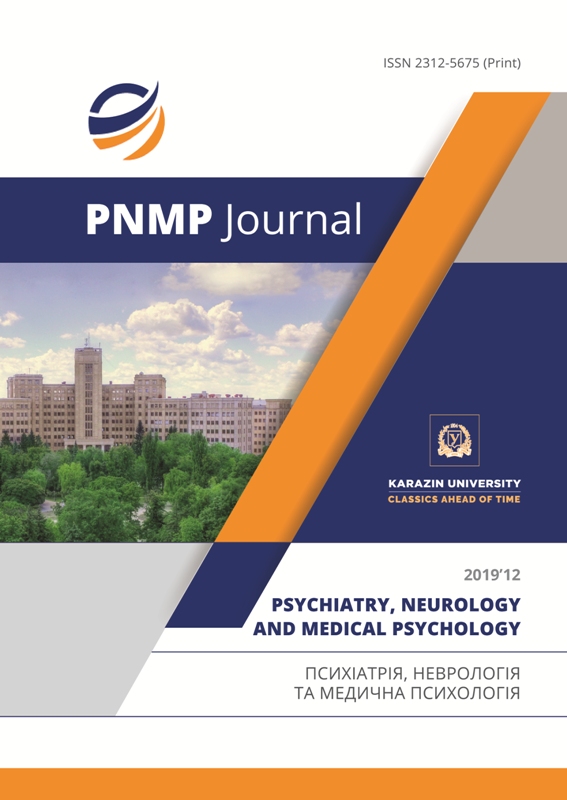Characteristic features of adolescents with different clinical forms of cerebral palsy
Abstract
The purpose of the study is to explore the characterological features of adolescents with cerebral palsy with various non-psychotic mental disorders of residual organic origin.
A psychodiagnostic examination of 73 adolescents with various clinical forms of cerebral palsy, who were diagnosed with nonpsychotic mental disorders of residual organic origin, was carried out: in 31 (42.5 %) – mild cognitive impairment, 42 (57.5 %) – organic emotionally labile disorder.
The study used psycho-diagnostic technique “Pathocharacterological diagnostic questionnaire” of A.E. Lichko, that intended to determine the types of accentuations of character and variants of constitutional psychopathy, psychopathic development, and organic psychopathy in adolescence and youth (14-18 years).
All adolescents underwent rehabilitation using Intensive Neurophysiological Rehabilitation System (INRS) in the Kozyavkin International Rehabilitation Clinic (Ukraine, Truskavets). The survey was conducted in the first three days of being adolescents in the rehabilitation center.
The results of the study indicate that in 100 % of examined adolescents with cerebral palsy, various types of character accentuations were diagnosed. In adolescents with mild cognitive impairment, labile (29.0 %), epileptoid (24.2 %), sensitive (16.1 %), and astheno-neurotic (12.9 %) types are prevailed. In adolescents with organic emotionally labile disorder, the most commonly diagnosed types are epileptoid (22.1 %), sensitive (21.0 %), hysteroid (17.4 %), and labile (14.3 %) types. In the group of adolescents with mild cognitive impairment (F06.7), a labile type of character accentuation was diagnosed significantly more frequently (p < 0.05) in boys (36.9 % ± 10,0 %) than in girls (6.25 % ± 12,0 %).
The study made it possible to establish the characterological features of personality development and emotional disorders in adolescents with cerebral palsy and to predict their importance in the formation of psychopathological disorders and the quality of socio-psychological adaptation of these groups of patients.
Downloads
References
Kozyavkin V.I., Shestopalova L.F., Podkorytov V.S. Detskie cerebralnye paralichi. Mediko-psihologicheskie problemy [Child Cerebral Palsy. Medical and psychological disorders.]. Ukrainski technolohii, Lviv, 1999, 133 p. (In Russ.)
Kovalev V.V. Semiotika i diagnostika psihicheskih zabolevanij u detej i podrostkov [Semiotics and diagnosis of mental disorders in children and adolescents.]. Medycyna, M., 1985, 227 p. (In Russ.)
Kalizhnyuk E.S. Psihicheskie narusheniya pri detskih cerebralnih paralichah [Mental disorders associated with cerebral palsy.]. Vishcha shkola, Kiev, 1987, 269 p. (In Russ.)
Sistema intensivnoj nejrofiziologicheskoj reabilitacii: metod Kozyavkina. Posobie reabilitologa / Pod red. V.I. Kozyavkina [Itensive neurophysiological rehabilitation system: Koziavkin's method. Rehabilitation manual. Edited by V.I. Kozyavkin.]. Papuga, Lvov, 2012, 240 p. (In Russ.)
Lichko A.E. Psihopatii i akcentuacii haraktera u podrostkov [Psychopathy and accentuation of character in adolescents.]. Medicina, L., 1983, 256 p. (In Russ.)

